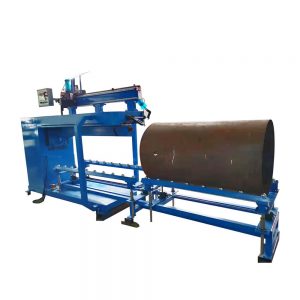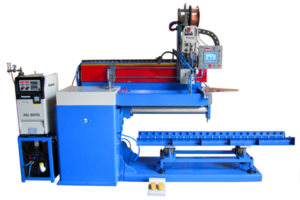- Selection of austenitic stainless steel welding consumables
The selection principle of austenitic stainless steel welding consumables is to ensure that the corrosion resistance and mechanical properties of the weld metal are basically equivalent to or higher than those of the base metal under the condition of no cracks. Generally, the alloy composition is required to be roughly the same as that of the base metal. match. For corrosion-resistant austenitic stainless steel, it is generally hoped to contain a certain amount of ferrite, which can not only ensure good crack resistance but also have good corrosion resistance. However, in some special media, such as the weld metal of urea equipment, ferrite is not allowed to exist, otherwise its corrosion resistance will be reduced. For heat-resistant austenitic steels, the control of ferrite content in the weld metal should be considered. For austenitic steel weldments that operate at high temperatures for a long time, the ferrite content in the weld metal should not exceed 5%. Readers can estimate the corresponding ferrite content based on the chromium equivalent and nickel equivalent in the weld metal based on the Schaeffler diagram.


- Selection of ferritic stainless steel welding materials
There are basically three categories of ferritic stainless steel welding consumables: 1) welding consumables whose composition basically matches the base metal; 2) austenitic welding consumables; 3) nickel-based alloy welding consumables, which are rarely used due to their high price.
Ferritic stainless steel welding consumables can be made of materials that are equivalent to the base metal, but when the degree of restraint is high, cracks can easily occur. Heat treatment can be used after welding to restore corrosion resistance and improve joint plasticity. The use of austenitic welding consumables eliminates the need for preheating and post-weld heat treatment, but for various steels that do not contain stabilizing elements, sensitization of the heat-affected zone still exists. Types 309 and 310 chromium-nickel austenitic welding consumables are commonly used. For Cr17 steel, 308 type welding materials can also be used. Welding materials with high alloy content are beneficial to improving the plasticity of welded joints. Austenitic or austenitic-ferritic weld metal is basically as strong as the ferritic base metal, but in some corrosive media, the corrosion resistance of the weld may be very different from that of the base metal. Pay attention when selecting welding consumables.
- Selection of martensitic stainless steel welding consumables
Among stainless steels, martensitic stainless steel can use heat treatment to adjust its properties. Therefore, in order to ensure performance requirements, especially for heat-resistant martensitic stainless steel, the composition of the weld should be as close as possible to the composition of the base metal. In order to prevent cold cracks, austenitic welding materials can also be used, in which case the weld strength must be lower than the base metal.
When the composition of the weld is similar to that of the base metal, the weld and the heat-affected zone will harden and become brittle at the same time, and a tempering softening zone will appear in the heat-affected zone. In order to prevent cold cracking, components with a thickness of 3 mm or more often need to be preheated, and heat treatment is often required after welding to improve joint performance. Since the thermal expansion coefficients of the weld metal and the base metal are basically the same, it is possible to completely eliminate welding after heat treatment. stress.
When the workpiece does not allow preheating or heat treatment, an austenitic structure weld can be selected. Because the weld has high plasticity and toughness, it can relax the welding stress and can dissolve more hydrogen, thus reducing the joint strength. However, due to the different thermal expansion coefficients of joints with uneven materials, shear stress may occur in the fusion zone under the working environment of circulating temperatures, leading to joint damage.
For simple Cr13 type martensitic steel, when the weld with austenitic structure is not used, there is not much room for adjustment of the weld composition. It is generally the same as the base metal matrix, but harmful impurities such as S, P and Si must be limited. Si can promote the formation of coarse martensite in the weld of Cr13 martensitic steel. Reducing the C content is beneficial to reducing the hardenability. The presence of a small amount of elements such as Ti, N or Al in the weld can also refine the grains and reduce the hardenability.
For multi-component alloyed Cr12-based martensitic heat-strength steel, the main purpose is heat resistance. Austenitic welding materials are usually not used, and the weld composition is expected to be close to the base metal. When adjusting the composition, it must be ensured that the primary ferrite phase does not appear in the weld, because it is very harmful to performance. Since the main components of Cr13-based martensitic heat-strength steel are mostly ferrite elements (such as Mo, Nb, W, V, etc.), in order to ensure that the entire structure is uniform martensite, it must be balanced with austenite elements, that is, there must be appropriate C, Ni, Mn, N and other elements.
Martensitic stainless steel has a very high tendency to cold crack, so it must be strictly kept low in hydrogen, or even ultra-low hydrogen. This must be paid attention to when selecting welding consumables.

